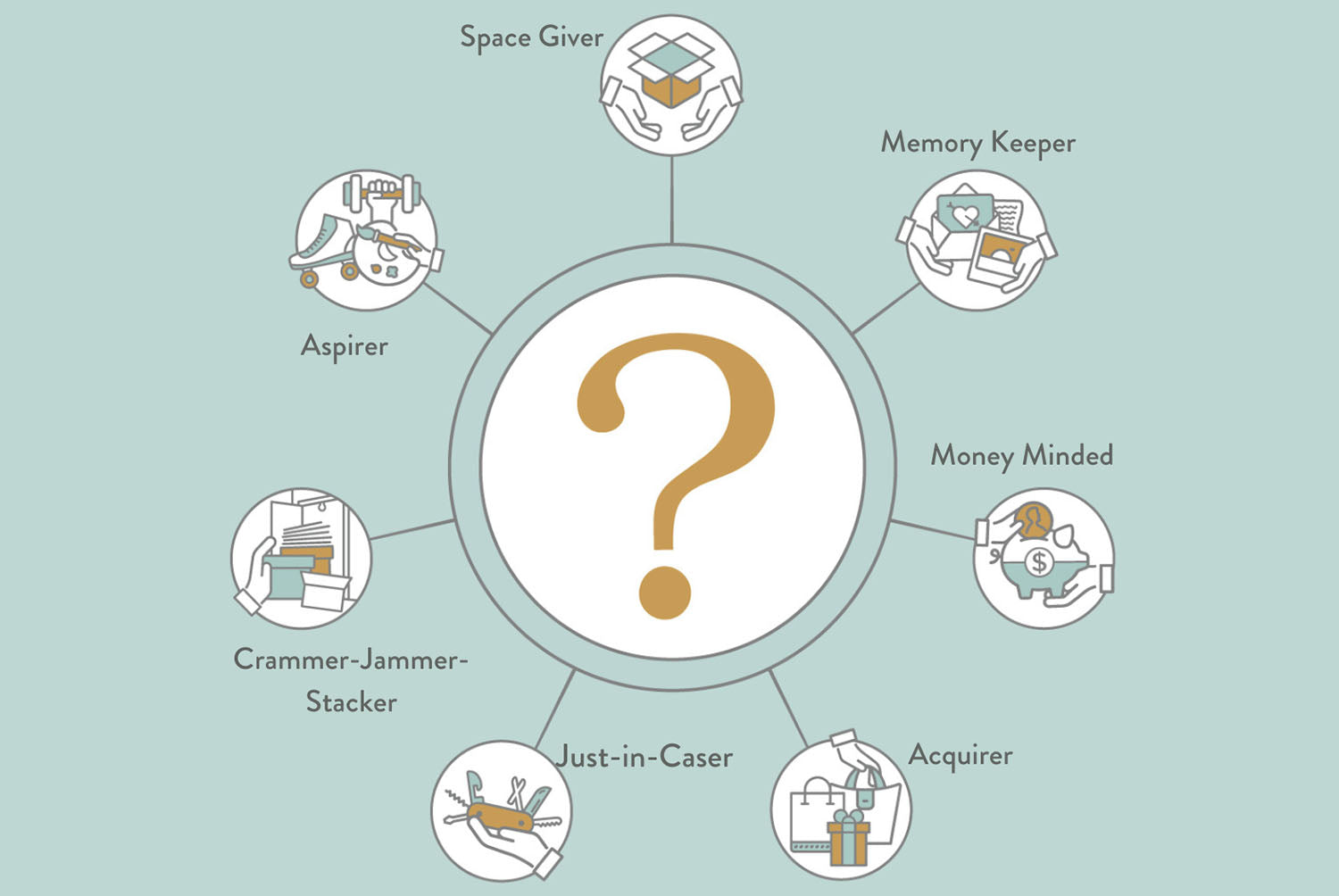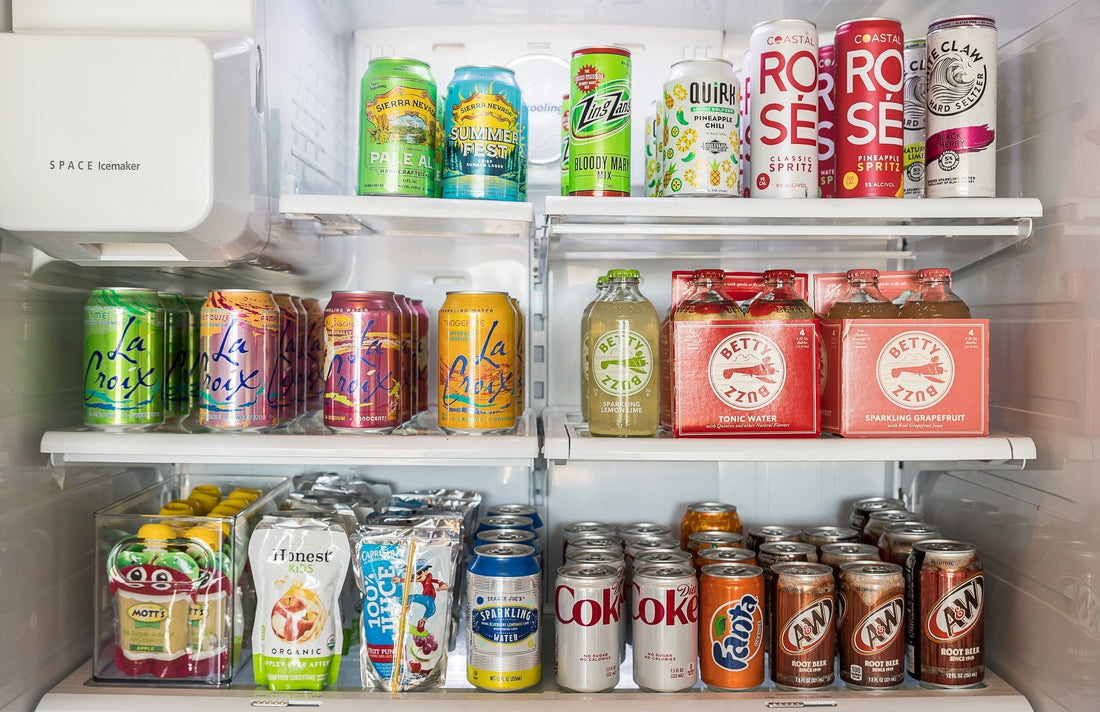
The Seven Organizing Profiles
Related Posts
Perfectly Imperfect Gratitude
As the leaves turn and the days shorten, November nudges us toward reflection and gratitude. But let’s be honest: Life isn’t picture-perfect, and neither are our holidays! Gratitude doesn’t require perfection, it’s about pausing to notice the good stuff even when (or maybe especially when) life is a little chaotic. At Bee Organized, we know that gratitude can shine the brightest when things are a little messy, mismatched, or unexpected. So this year, we’ve compiled our list of things that we are truly grateful for: We are grateful for sunshine streaming through the windows … even if it shows off every dust bunny in the room. We’re grateful for mismatched table settings … especially when bringing out the extras means that our table is packed with people we love. We’re grateful for the chance to make Grandma’s “famous” cranberry dish for another year … even if most people politely take just the tiniest spoonful. We’re grateful for leftovers that keep us fed all weekend long … especially when finishing the last slice of pie means we finally reclaim a little counter space! We’re grateful for family piling into our homes … even if it takes a week of cleaning, furniture shuffling, and a lot of Tetris-like creativity to wedge everyone into our space. We’re grateful for board games after dinner … especially when the laughter is louder than the arguments about the rules! We’re grateful for the chance to take a family photo … even if someone we love is missing and someone always has their eyes closed. We’re grateful for each and every holiday we get to celebrate … especially the ones that don’t require wrapping presents. We’re grateful that we finally got those donations dropped off … even though we drove around with them in our trunk for two months! We’re grateful that there are zero calories in desserts that we share with others … especially pecan pie at Thanksgiving. We’re grateful when we find a working pen deep in the junk drawer … even though that means that we still haven’t gotten around to organizing the junk drawer. We’re grateful for pets underfoot in the kitchen … especially when they do an excellent job of keeping the floor clean. We’re grateful for holiday traditions … even when they’re quirky, outdated, or not quite “us” anymore. We’re grateful for road trips to see family … especially when the singalongs, snack stops, and backseat negotiations turn into cherished memories. We’re grateful for a house filled to the brim with laughter and footsteps … even though we’ve started to really enjoy the peace and quiet of our empty nest. And of course, we’re ALWAYS grateful for stretchy pants … especially when it’s time for seconds of mashed potatoes and stuffing. Gratitude doesn’t cancel out the mess. It doesn’t un-burn the overcooked rolls, silence the sibling squabbles, or sweep away the clutter. But it does remind us that even in the chaos, there’s joy worth noticing. This season (and always!), let’s embrace the imperfection and focus our energy on soaking up the good in our lives. We’re grateful each day that we are in the business of serving people like you in every season of your life. If you need our judgment-free, compassionate, and confidential help to sort out your sticky spots, you know you can call in the Bees!
Learn moreThe Things That Haunt Your Home
You know those things lurking in the dark corners of your home—the ones you swear you will use someday, but instead they just gather dust and give you the heebie-jeebies every time you notice them? We’re not talking about ghosts or ghouls—we’re talking about the clutter that refuses to leave! From ancient cords to mysterious kitchen tools, from special occasion shoes to the costume your youngest hasn’t been able to fit into since preschool, these items haunt your basement, attic, and everywhere in between like poltergeists. And just like in any scary story, the first step to breaking the curse is to shine a light on what’s really hiding there. This October, we’re discussing the most spine-chilling items that tend to haunt our clients’ houses. We know that what people hold on to is closely tied to their Organizing Profile. (If you don’t know or remember your Organizing Profile, you can take our short Profile Quiz!) Understanding your profile can help you lift the spell these items have over you—and reclaim your space from the ghosts of clutter past! The Space Giver: Keeper of Other People’s Skeletons What haunts you: Boxes of your grown kids’ memorabilia Your neighbor’s motorcycle because your garage is bigger Your sister’s crates “just while she’s getting her new apartment sorted out” Family heirlooms you don’t want but feel bad giving away Why you keep it: You feel guilty saying “no”. Decluttering spells: Set a “pick-up by” date for all of the stored items that aren’t yours. Offer to help your loved ones sort through the items you are storing for them—and to find new homes for the things they don’t want back. Remember that your home isn’t a haunted storage unit—you are allowed to reclaim your space! The Memory Keeper: Haunted by the Past What haunts you: Large-format canvasses Framed pictures Envelopes and cards from Christmases past Special event programs Costumes Special event clothing (wedding guest dress, prom gown) Cassettes, CDs and DVDs from yesteryear Sentimental hats and event T-shirts Entire sets of china or dishes Yearbooks Why you keep it: Every item feels like it holds a piece of the past—and getting rid of it feels like erasing the memory. Decluttering spells: Keep one talisman from a set—for example, hold on to one teacup instead of the whole china set. Snap photos of sentimental items so they can live in the cloud instead of your attic. Display only what you truly love and donate the rest to a good home. Create a memory box with a defined limit (one crate or one shelf). This lets you honor the past without drowning in it! The Money-Minded: Cursed by the Cost What haunts you: Unused exercise equipment Hobby supplies like craft kits, art materials, musical instruments, sports gear Kitchen gadgets Expensive makeup and beauty products Jewelry Things that are too valuable to use—like special glasses or dishes Special occasion clothes that no longer fit Why you keep it: Throwing it away feels like throwing money away. Decluttering spells: Remember that money is a sunk cost—so keeping the item doesn’t get the money back. You can sell high-value items to recoup some of the cost. Flip the script! Remind yourself that space has value too. Keeping things you don’t use is like paying rent to store ghosts. The Just-in-Caser: Prepared for the Zombie Apocalypse What haunts you: Expired medications and vitamins Duplicate appliances Condiment packets Storage containers without lids (and lids without storage containers!) 17 contact lens cases Stacks and stacks of instruction manuals Office supplies Extra screws and allen wrenches Vacuum attachments you’ve never even tried to use Why you keep it: "What if I need it someday?" Decluttering spells: Store things at the store—and don’t buy them until you truly need them. If you can replace the item for less than $20 or in less than 20 minutes, you don’t need to keep it. Keep a reasonable limit on duplicates (do you really need 48 extra lightbulbs?) Remember: In the event of a Zombie apocalypse, extra potato mashers won’t save you anyway. The Acquirer: Victim of the Siren Song of the Sale What haunts you: Decorative seasonal items Reusable shopping bags Cleaning supplies Gardening pots and containers Cute packages of themed food (like pumpkin-and-ghost-shaped pasta!) Clothes you never wear Why you keep it: The thrill of acquiring is addictive and every deal feels too good to pass up. Decluttering spells: Ask yourself: Would I buy this again at full price today? Pause before buying to allow the spell to wear off. If the item still calls to you after 24 hours, consider buying it—otherwise, let it fade into the mist. The Crammer-Jammer-Stacker: The Master of the Monster Closet What haunts you: Mystery cords Piles of office supplies Half-used candles Seasonal decor that never gets displayed Vases Receipts and old paperwork Office supplies Water bottles and coffee tumblers Pillowcases from sheet sets you threw away long ago Why you keep it: Out of sight, out of mind—until the closet door bursts open in the middle of the night! Decluttering spells: Empty one hidden space at a time—you’ve got to face your monster head on! Use clear bins with labels so nothing can hide from the light. If you haven’t used it in a year or more, it’s not worth keeping in the dungeon. The Aspirer: Bewitched by the Someday Self What haunts you: Unopened art supplies Musical instruments you’ve never learned Exercise gear for a routine you never started Golf clubs Unread books Specialty baking pans and kitchen appliances Stack of cookbooks for cuisines you’ve never made Why you keep it: The items represent a dream or version of yourself that you want to be someday. Decluttering spells: Keep only the supplies for one active project or hobby at a time. Donate or sell items for hobbies and activities you’ve lost interest in—let them enchant someone else! Create a future wish list instead of stockpiling items you may never use. Clutter has many disguises—nostalgia, guilt, just-in-case thinking—but the end result is the same: Your home feels more like a haunted house than a haven. By understanding your Organizing Profile and why you keep the items you keep, you can banish the fear of getting rid of what’s haunting you and make room for the life you want now. And if the clutter feels too scary to face alone … you know you can call in the Bees!
Learn moreThe Ultimate Guide to Fridge & Freezer Food Storage
This spring, the Environmental Protection Agency released its latest estimates of how much food Americans waste each year. According to their research, the average family of four spends $3,000 per year on food that ends up in the garbage. For every three grocery bags you carry into the kitchen, one of them ends up in a landfill. Ouch! The good news is that the overwhelming majority of this wasted food and money is within our control. A chaotic fridge and freezer makes it harder to track what you have, easier to buy unnecessary duplicates, and much more likely for you to forget about food until it’s covered in fascinating mold specimens. We have advice on how to whip your refrigerator into shape—and how to change your behaviour surrounding food so that you can make the most of your grocery budget! But First—Purge and Wipe Every successful fridge reset starts with a clean slate! Take everything out of your fridge and freezer, arrange it by type on your kitchen counter, and toss out everything that is obviously spoiled, expired, or just plain unrecognizable. Then, wipe down each shelf, wall, and drawer. It sounds so simple, but depending on how long you’ve let it go, this could take an hour or more, so pop in some high-energy music or your favorite podcast and get to work. When it’s clean, line the bottoms of drawers with paper towels so that your next clean-out goes more quickly. Organize for Visibility The golden rule of refrigerator organization is that if you can’t see it, you won’t eat it—and that’s how good food goes bad. Here are a few of our favorite tips for keeping the fridge organized: Make an EAT FIRST shelf or bin—This is where you should place leftovers and any items reaching the end of their lifespan. Make sure it’s clearly labeled and in your direct line of sight! Create and label zones—Group similar things together so that you can see what you have, avoid buying duplicates, and reduce time searching endlessly for ingredients. In the fridge, consider zones for condiments, easy-to-grab snacks, dairy, beverages, fruits/veggies, and meal prep ingredients. In the freezer, we often start with zones for fruits/veggies, sweets, proteins, pre-made meals, and grains. Label everything—How many times have you put something in the freezer and think you’ll remember what it is only to find it two months later and think you’ve never seen it before? Make a rule for yourself that you can’t stick anything in the fridge or freezer that isn’t labeled. We like to keep a roll of masking tape and a Sharpie near the fridge. Just be sure to stick your label on the side, not the top, so that it’s easy to spot. Use clear glass containers—We rarely urge you to buy a bunch of new organizing products when so many of the things you already own can be repurposed. But if you don’t have clear glass bins or containers for fridge storage, they are worth every single penny. You will quickly recoup any money you spend on clear bins with less wasted food! Freeze bags flat—Whether it’s leftover soup, pureed tomatoes from your summer harvest, or bags of frozen veggies, freezing items flat will save space in your freezer and allow you to see what you have immediately. Lengthen Your Food’s Lifespan Another way to reduce your family’s food waste is to help your items last as long as they can! Here are a few pieces of advice that you can put into action: Manage your temperature—According to the FDA, our freezers should be set to 0℉ and our refrigerators should be set to 40℉ or below. If you suspect your fridge isn’t keeping your items as cool as it should, you can pick up an appliance thermometer for less than $10 at a home improvement or big box store. Lower shelves tend to be cooler, so that’s where you should keep your meat and dairy products. And the temperature of the door fluctuates the most, so that’s a great place to store things that aren’t too fussy, like condiments, pickles, nut butters, and non-dairy beverages. Preserve your herbs—Fresh herbs are such a delight, but since we rarely use an entire container for one recipe, they are at the top of the list for items that are lost in the fridge and then ultimately wasted. For fresh herbs, either store them in a glass of water in the fridge like a bouquet of fragrant flowers or roll them in a damp paper towel and seal in a freezer bag. Use mason jars with airtight lids—Remember that oxygen is the enemy of food preservation. The more airtight your containers are, the longer your food will stay fresh. That’s why leftovers stored in a glass jar with a reusable airtight lid will last significantly longer than something stored in a zipper bag or container with a loose-fitting lid. Stock from the back—When you unpack groceries, make sure you take the extra minutes to tuck new items behind the older items in your fridge or freezer, rather than just shoving them wherever you can fit them in the front. If you just bought a new box of 12 yogurt cups from Costco, make sure each and every one is tucked behind the 3 cups you still have left from your last trip. Prevent the squish—Damaged food spoils faster, so hang on to a few clamshell containers from spinach or berries—they’re perfect for protecting delicate items like peaches that come home in a produce bag and would quickly bruise in the mosh pit of your fridge. Manage humidity—Things that like to wilt dramatically (think leafy greens, carrots, and cucumbers) need high humidity to stay fresh. Either keep them wrapped up or put them in a high-humidity produce drawer in your fridge. Keep things growing—If you’ve got a sunny spot in your kitchen, use it to keep your greens growing. If you’ve got the root ends of green onions, celery, or even romaine lettuce, pop them in a glass with an inch of water and set it on your kitchen counter. Change the water every day or two and you’ll be amazed to see fresh growth appear—ready to snip and enjoy as needed! Use Every Last Bit A little creativity goes a long way when it comes to using up odds and ends in your fridge and panty. Here are a few of our go-to methods: Second chance meals—Miscellaneous leftovers of protein, vegetables, and cheeses are the perfect addition to pastas, soups, omelettes or frittatas, and sauces. These everything-but-the-kitchen-sink dishes often turn out to be family favorites! Smoothies—The last big spoonful of yogurt. A couple of inches of orange juice or milk in the bottom of the jug. The browning banana on the counter. The six strawberries someone didn’t eat from their packed lunch. We love the flexibility of smoothies for making delicious treats out of things that are just taking up space or on their last legs! Croutons—Stale bread makes AMAZING fresh croutons. Take whatever you’ve got—whole wheat, bagels, sourdough, hot dog buns—and cut it into one-inch cubes, saute the cubes on medium heat for 10-15 minutes with a couple cloves of garlic, salt, and butter or olive oil, and you will be shocked at how utterly delicious croutons can be! Herb ice—Dice leftover herbs, tightly pack the herbs into ice cube trays, add water or olive oil, freeze, then toss the frozen flavor cubes into a freezer-safe bag or jar. Don’t forget to label them! Now you’ve got a wonderful flavor boost you can add into soups and sauces all year long. Keep a USE IT UP list—Keep a dry-erase board and marker near the fridge. Keep a running list of items that you’ve only partially used or will soon expire so that you remember to use that half container of feta or the rest of the cilantro before it winds up in the garbage! Shop Mindfully Shop from a list, not from your heart (or stomach!). Keep a grocery list in the kitchen and make sure everyone who lives there knows to add items to the list when they run low or run out. Knowing exactly what you need when you go to the store (rather than just guessing) keeps you from buying the fifth jar of mustard just in case. Reset weekly—We’ve talked before about the importance of a Weekly Reset in your kitchen. If you are doing this, you will know how many meals will need to be prepared at home and how many people will be eating at each meal. Are you hosting any guests this week? Are you eating any meals out? Will any of the meals in your plan create ideal leftovers? Having a finger on the pulse of what you can expect each day will help you only buy the groceries you need when you shop. One Last Thing… It may not be glamorous, but if your fridge feels like it’s working too hard—or isn’t cold enough—it might be time to check the coils. Pet hair and dust bunnies can clog airflow. Give the coils underneath or behind your fridge a quick vacuum so it can keep your food cooler for longer. If this sounds daunting to you, watch a YouTube video or two first! A clean, organized fridge and freezer is one of the most underrated ways to save time, money, and stress in your week. It means fewer wasted groceries, more delicious meals, and the confidence of knowing exactly what you have on hand. You’ve got this! And remember—if your fridge project turns into a whole-kitchen project, you know you can always call in the Bees!
Learn more



